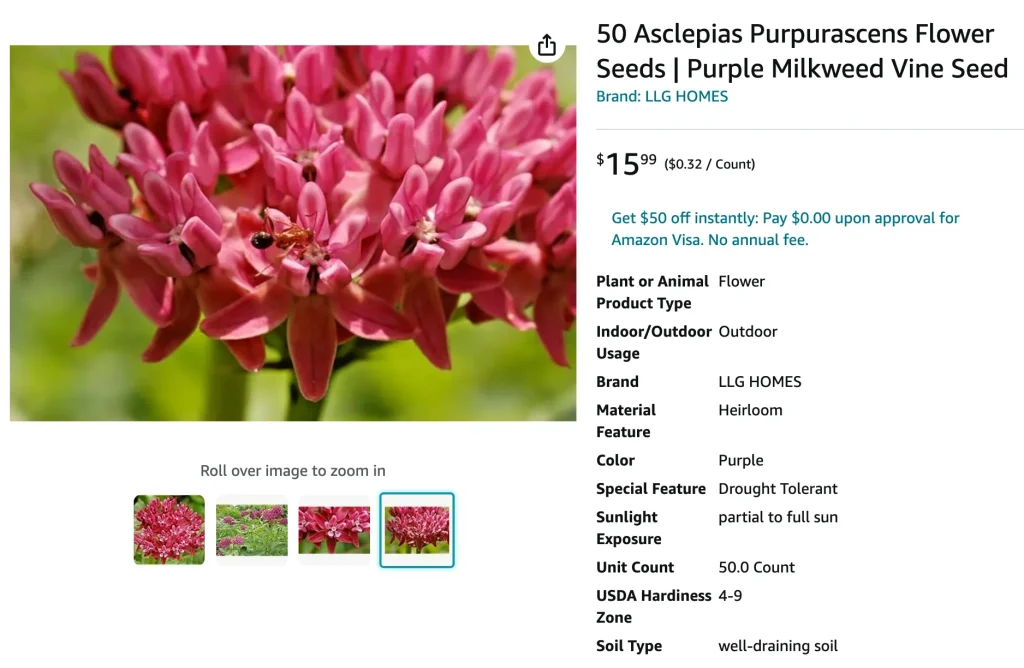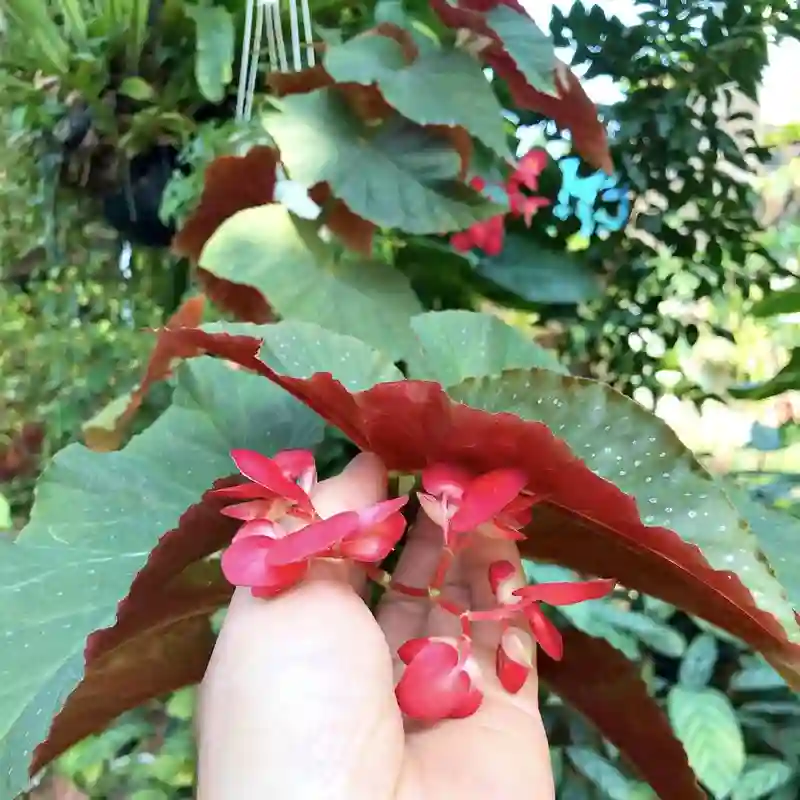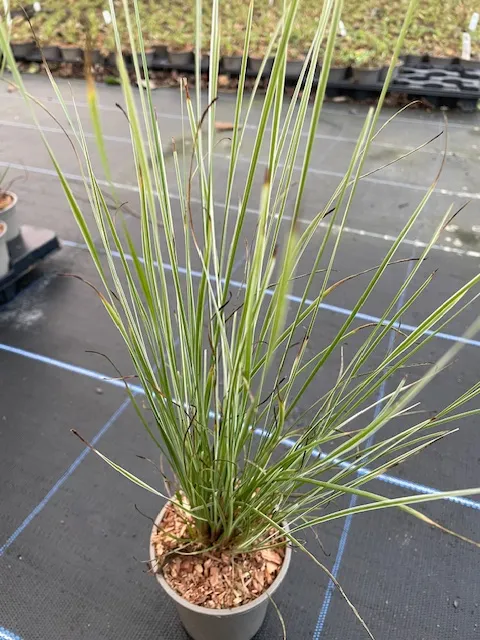
Frequently Asked Questions About Asclepias Purpurascens
When I first encountered Asclepias Purpurascens, also known as Purple Milkweed, I was immediately intrigued by its unique beauty and the potential it offers for gardens. This plant, native to North America, is not just a stunning addition to any garden but also plays a crucial role in supporting pollinators. Here, I’ll answer some common questions about Asclepias Purpurascens, covering everything from its growth habits to care tips.
209 Species in Genus Asclepias
How Big Does Asclepias Purpurascens Grow?
One of the most frequent questions I get about Asclepias Purpurascens is about its size. Typically, this plant grows to a height of 2 to 3 feet, although it can sometimes reach up to 4 feet under ideal conditions. The plant forms a bushy clump with its lance-shaped leaves and dense clusters of pinkish-purple flowers. Its size makes it suitable for both smaller and larger garden spaces, where it can serve as a focal point or part of a mixed border.
How to Grow Asclepias Purpurascens from Seeds?
Growing Asclepias Purpurascens from seeds is quite straightforward, though it does require some patience. Here’s a step-by-step guide based on my personal experience:
- Seed Preparation: Start by cold stratifying the seeds. Place them in a damp paper towel inside a plastic bag and refrigerate for about 30 days. This process mimics the natural winter conditions that the seeds need to break dormancy.
- Sowing: After stratification, sow the seeds in well-draining soil. You can start them indoors in seed trays or directly outdoors once the risk of frost has passed. Sow the seeds about 1/4 inch deep.
- Watering and Light: Keep the soil consistently moist but not waterlogged. Asclepias Purpurascens prefers full sun, so place your seed trays or planted area in a sunny location.
- Transplanting: Once the seedlings have grown a few inches tall and developed a couple of sets of leaves, you can transplant them into their permanent garden spots. Space them about 18 to 24 inches apart to allow for their mature size.
How to Care for Asclepias Purpurascens?
Caring for Asclepias Purpurascens is relatively easy, but here are some tips to keep it thriving:
- Soil: This plant prefers well-drained soil. While it is tolerant of various soil types, it does best in soil that is not too rich.
- Watering: Regular watering is important, especially during dry spells. However, avoid overwatering as it can lead to root rot.
- Fertilizing: Asclepias Purpurascens doesn’t need a lot of fertilizer. A light application of compost in the spring should suffice.
- Pruning: Deadheading the spent flowers can encourage more blooms and prevent self-seeding if you don’t want the plant to spread.
How to Propagate Asclepias Purpurascens?
Besides growing from seeds, Asclepias Purpurascens can be propagated through division. Here’s how:
- Timing: The best time to divide the plant is in early spring or late fall when the plant is dormant.
- Process: Dig up the plant and carefully divide the root ball into smaller sections, ensuring each section has healthy roots and shoots.
- Replanting: Replant the divisions immediately in their new locations, spacing them adequately.
What to Plant With Asclepias Purpurascens?
Asclepias Purpurascens pairs beautifully with a variety of other plants. Consider planting it with:
- Echinacea: Their contrasting flower shapes and colors complement each other.
- Rudbeckia: The bold, bright blooms of Rudbeckia contrast nicely with the softer pinkish-purple hues of the milkweed.
- Grasses: Ornamental grasses provide a nice textural contrast and help frame the milkweed.
Can You Grow Asclepias Purpurascens Indoors?
While Asclepias Purpurascens is primarily an outdoor plant, you can grow it indoors if you provide the right conditions. It requires plenty of sunlight, so a south-facing window or grow lights are necessary. Ensure it has enough space for its growth and use a well-draining potting mix.
Is Asclepias Purpurascens Toxic?
Asclepias Purpurascens is toxic if ingested, primarily affecting humans and pets. The plant contains compounds called cardenolides, which can cause gastrointestinal issues and more severe symptoms if consumed in large quantities. It’s best to keep the plant away from children and pets and to handle it with care.
Benefits of Asclepias Purpurascens
The benefits of Asclepias Purpurascens extend beyond its beauty:
- Pollinator Support: It attracts butterflies, especially monarchs, providing a crucial nectar source.
- Ecosystem Contribution: It supports a range of beneficial insects and contributes to biodiversity.
Common Problems with Asclepias Purpurascens
Though generally hardy, Asclepias Purpurascens can face a few issues:
- Pests: Watch out for aphids and spider mites, which can sometimes infest the plant.
- Diseases: Root rot can occur in poorly drained soil. Ensure good drainage to prevent this problem.
Comparison with Other Similar Plants
Asclepias Purpurascens is often confused with other milkweed species. Here’s a quick comparison:
- Asclepias Syriaca (Common Milkweed): Larger in size and more vigorous, with larger flower clusters and a stronger fragrance.
- Asclepias Tuberosa (Butterfly Weed): Known for its bright orange flowers and drought tolerance.
Each milkweed species has its unique characteristics, but Asclepias Purpurascens stands out for its delicate, colorful blooms and its role in supporting monarchs and other pollinators.
I hope this comprehensive guide helps you with all your questions about Asclepias Purpurascens. Whether you’re growing it from seeds or just looking to enhance your garden with this beautiful plant, it’s a wonderful choice for any garden enthusiast.
If i die, water my plants!



